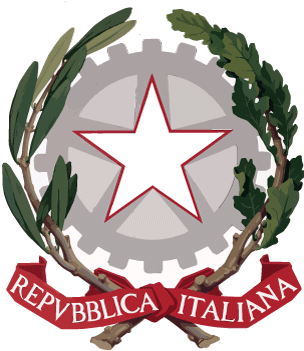First, choose an event o a place to visit
Select the date from the calendar and indicate the number of people to send your booking request.
You will be contacted by our staff. Thank you.
Fill out the form with your data to confirm your booking.
Thank you. Your booking code is {{codice}}, we have sent a summary email to the address {{email}}
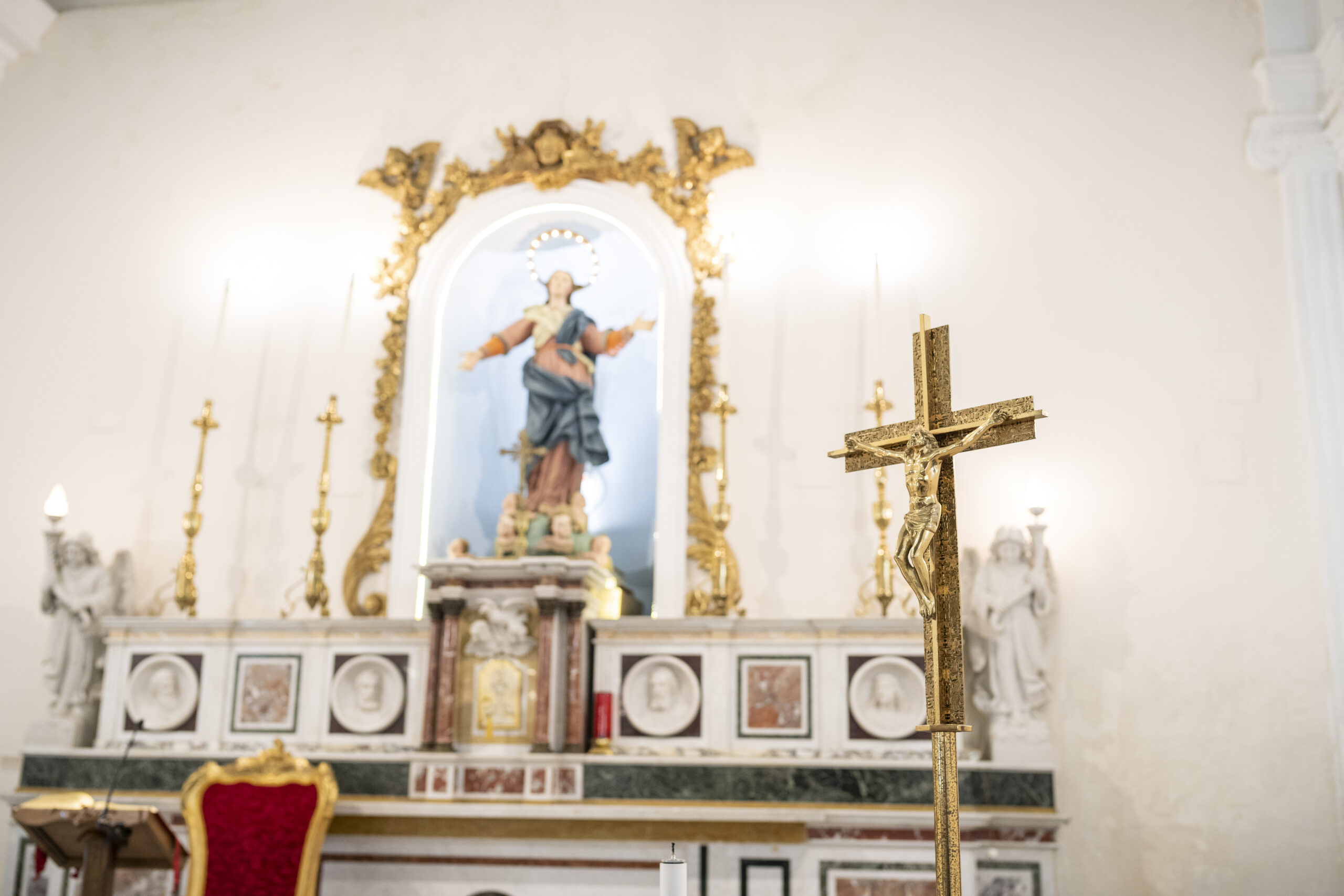
15th century
The church of San Giovanni Battista was an ancient parish near the medieval gate of the Auliva. Of considerable historical interest, it had taken the title of the Baptistery of San Giovanni in Fonte which was abandoned in the 9th century. A cemetery was annexed to the church, a symbol of archaic funeral rites, which contrasted with the Western custom which required burials inside sacred buildings. The church has been restructured respecting the ancient configuration: it has a rectangular plan with a small sacristy, a single nave flanked on the right side by a small nave with the ius patronatus chapels, a main nave with a flat ceiling and a round arch which circumscribes the presbytery, side walls decorated with Ionic pillars. The external façade has four Doric pillars which support the pediment and is made up of pilasters which arise on a high base, surmounted by a large tympanum. At the center of the facade, the central door. The interior of the church is very suggestive, simple and linear, of great spatial value, with a coffered ceiling and collected precisely due to the essentiality of the structure formed by a rhythmic succession of pointed arches. The presbytery is raised by two steps, the main altar is in Padula stone with a table, two angels holding torches on the sides and two marble putti heads; on the case the deer and the dove, plus the figure of the Holy Spirit with two Angels. Overlooking the main altar we find the effigy of the Madonna Assunta (from the 18th century). Higher up, we can admire a glass representation of the Lamb triumphant over the world with the words: Ecce Agnus Dei. The side nave houses an altar with the inscription Ave gratia plena and the statue of the Madonna del Latte (second half of the 18th century), which precedes the Crucifix in the traditional procession towards the chapel of San Sepolcro on Ascension Day.
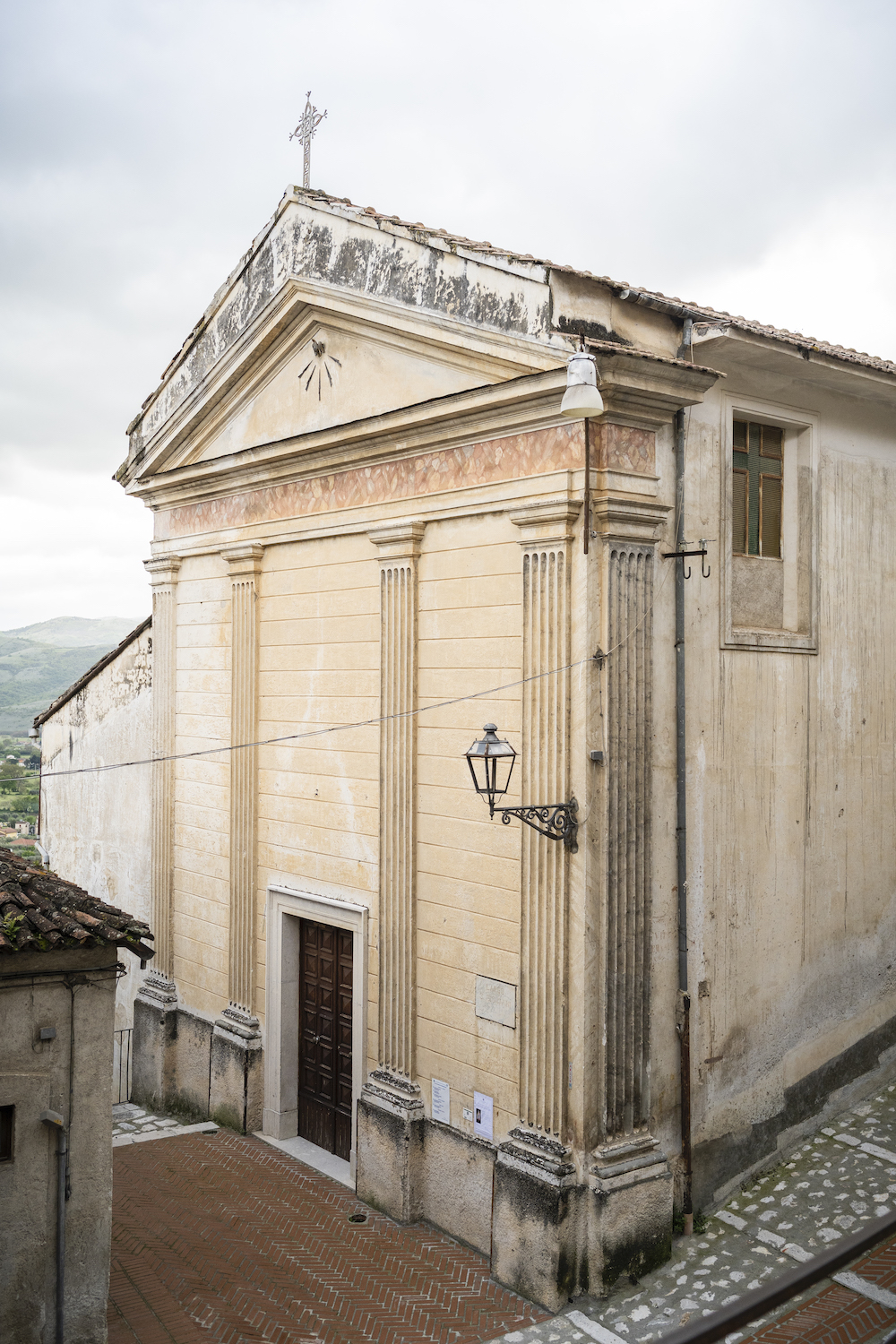
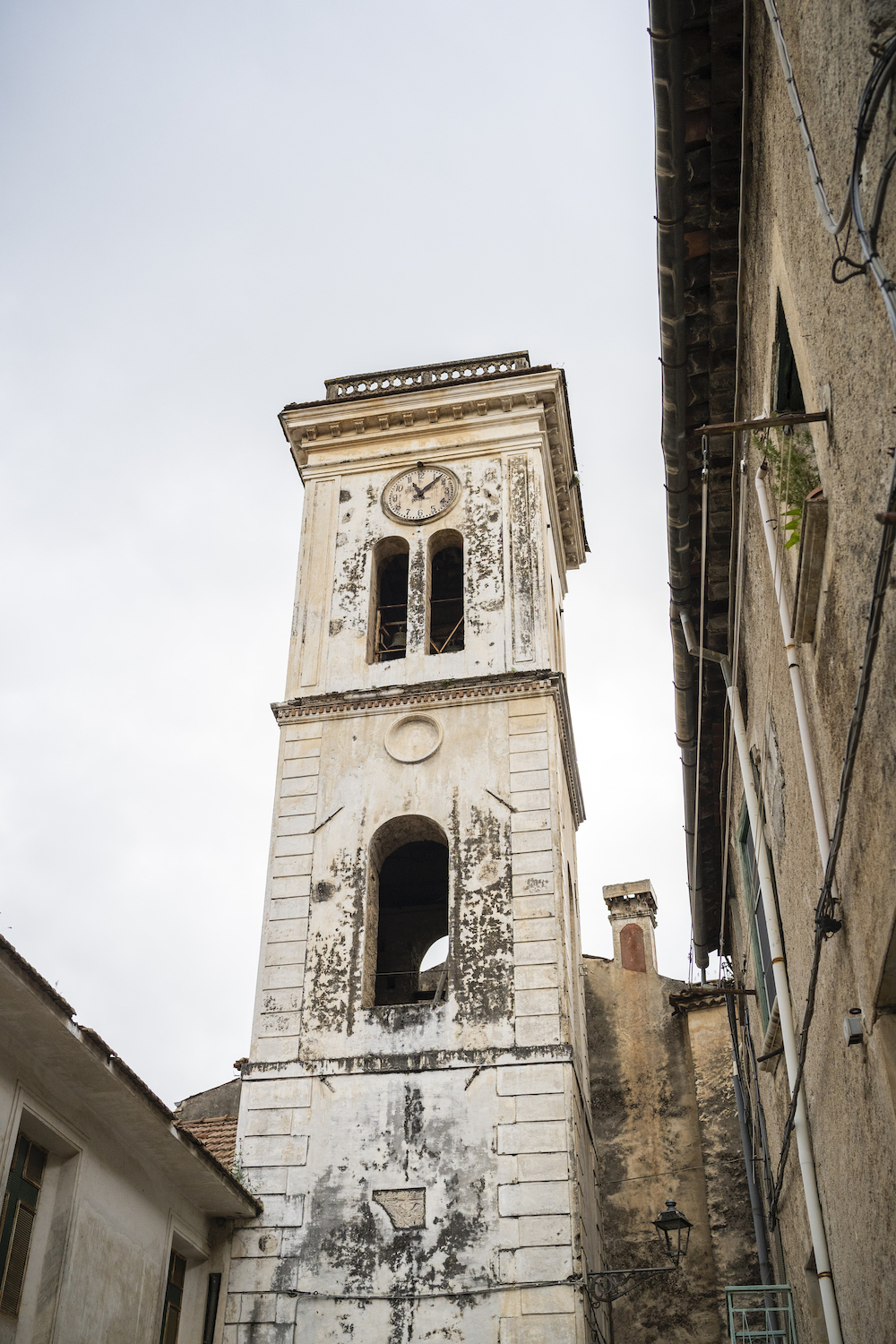
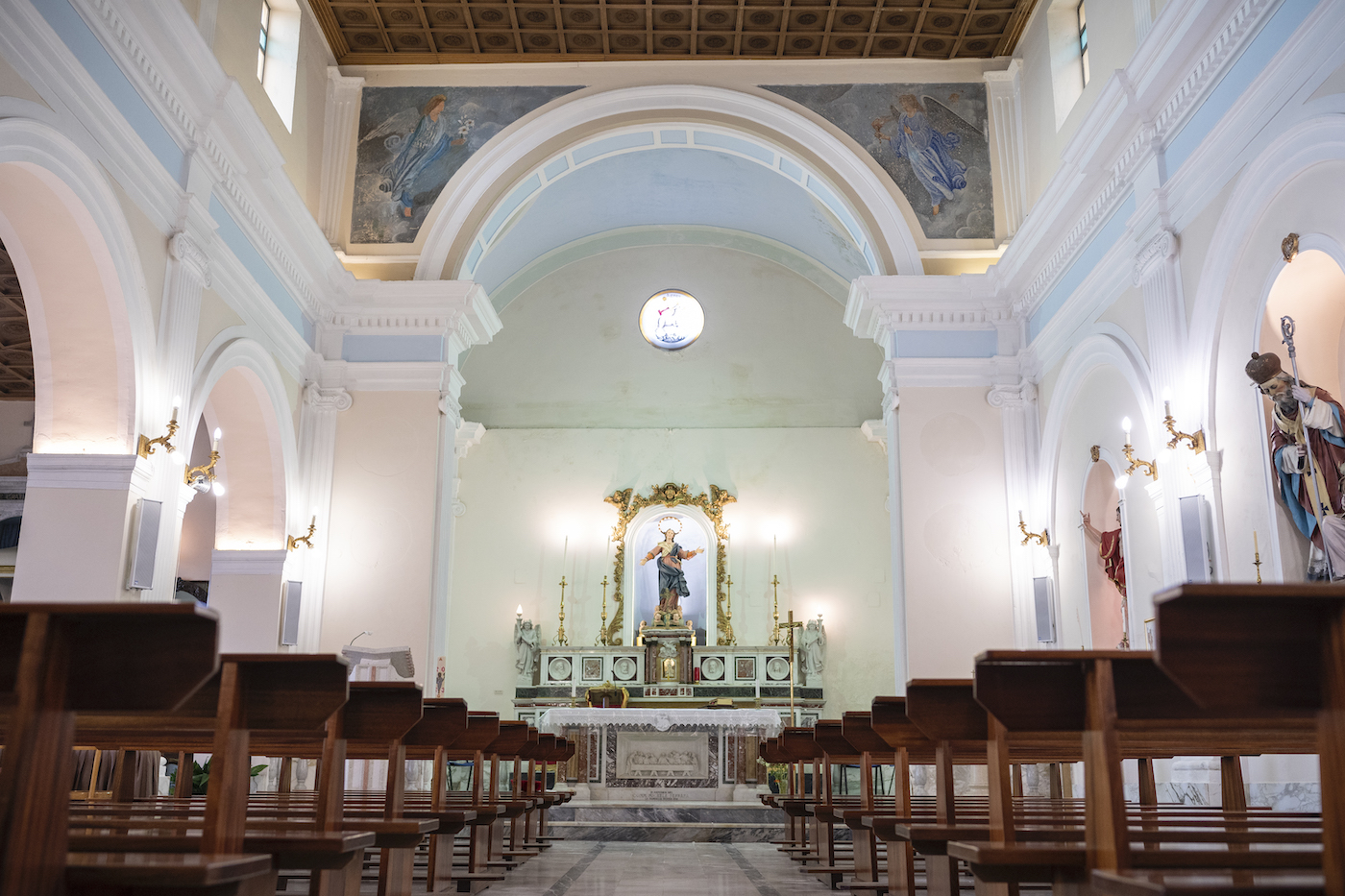
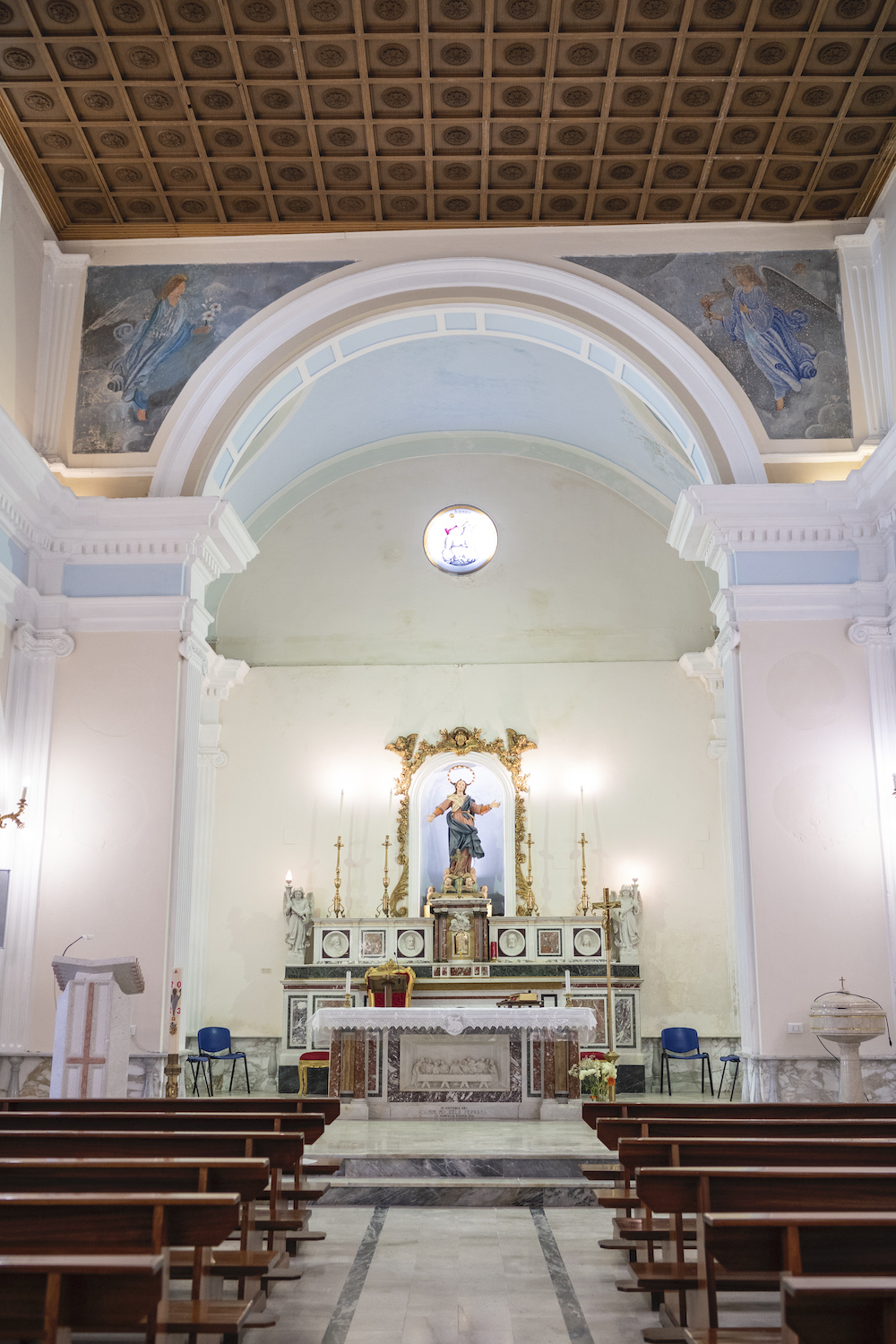
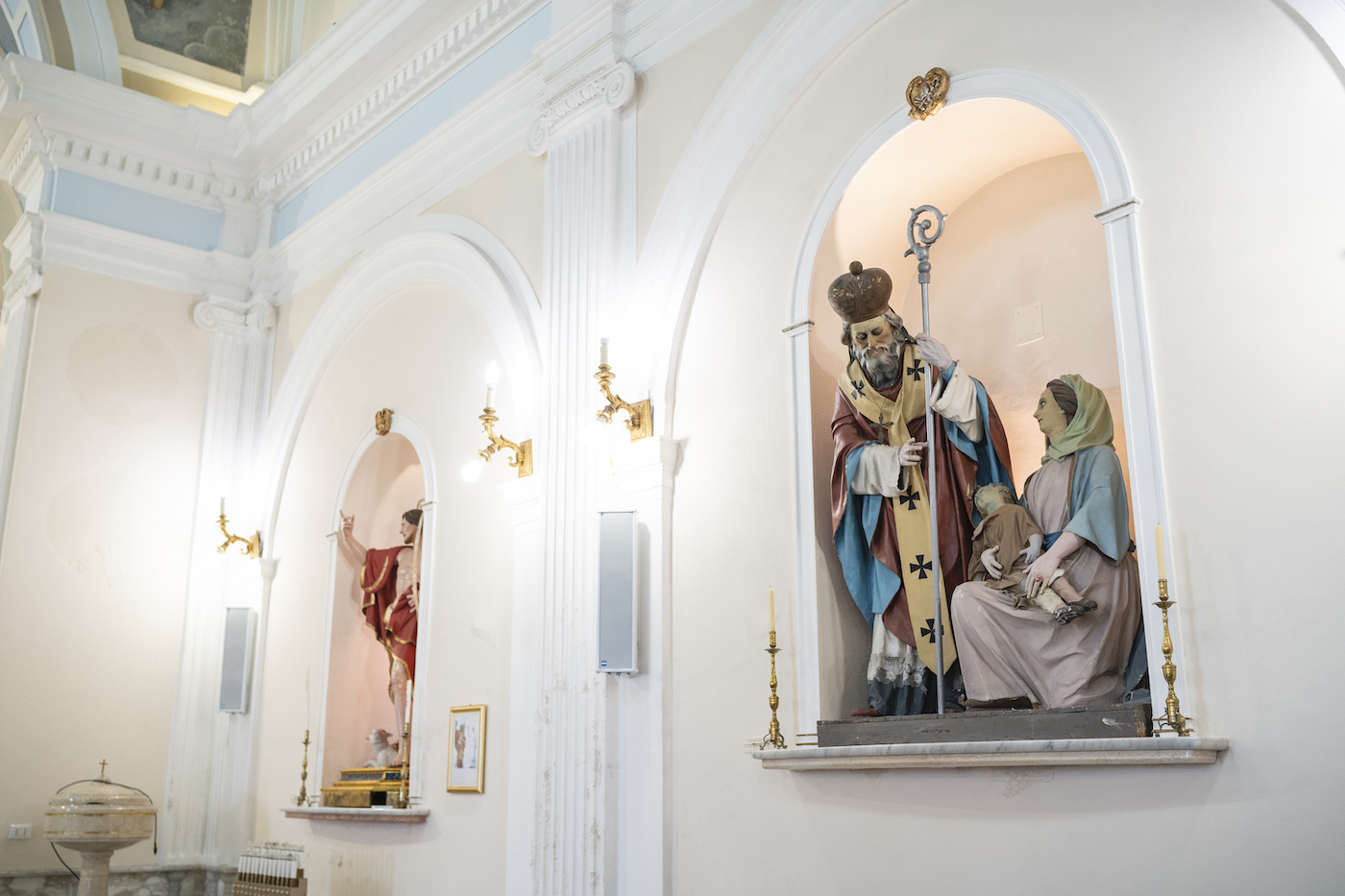
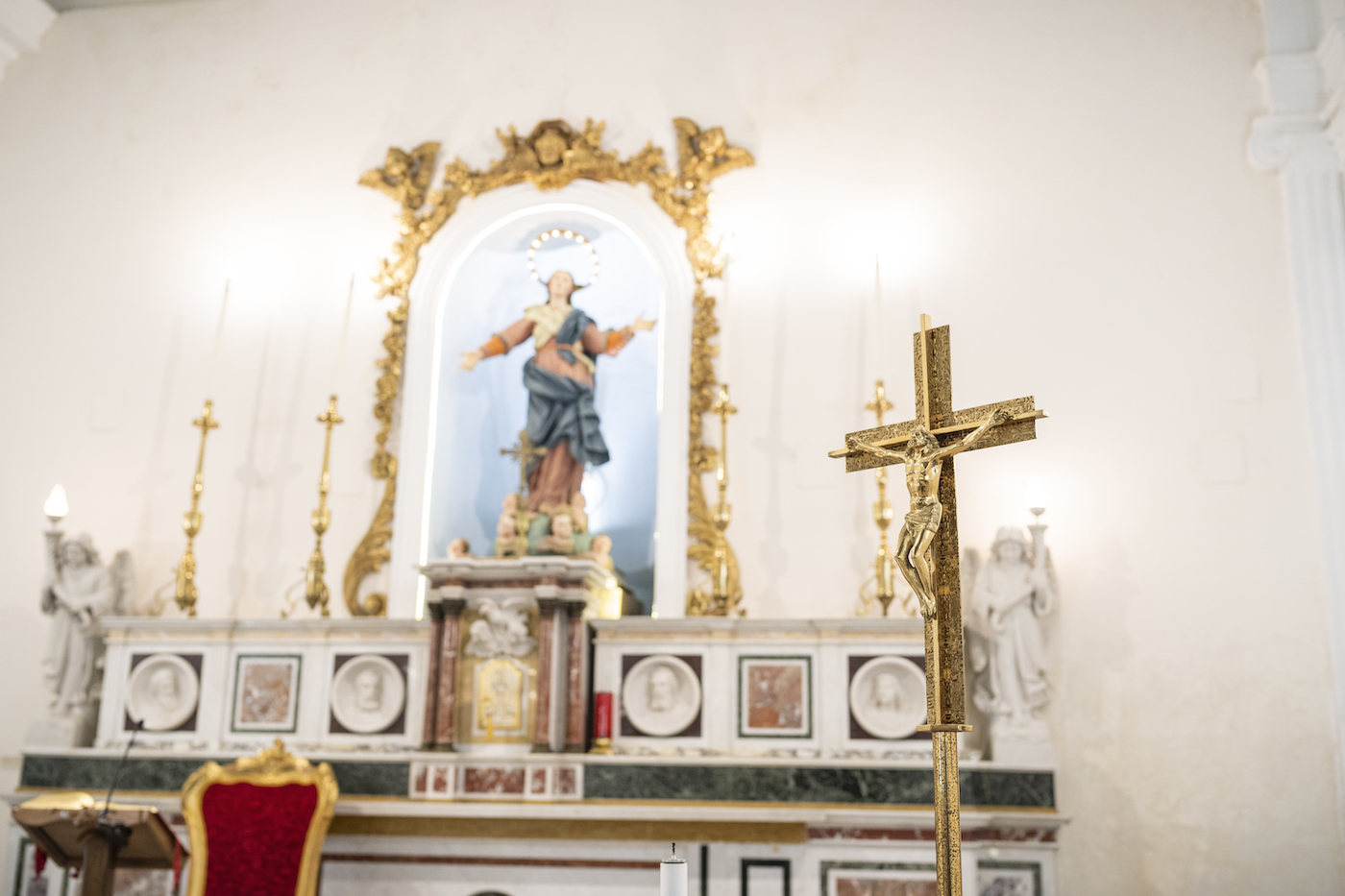
Padula, famous throughout the world for the monumental Certosa di San Lorenzo, a UNESCO heritage site, is rich in artistic and architectural elements, made up of churches, streets, statues and votive aedicules also made of local stone which bear witness to 1100 years of life. Therefore, it is not possible to overlook the context in which the Carthusian site was built and above all to overlook two fundamental elements: the matter and the spirit of the Certosa. Discover the itineraries through the territory of Padula.



